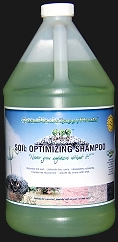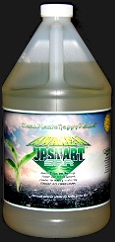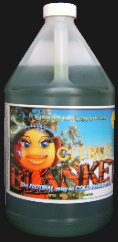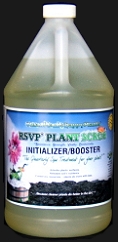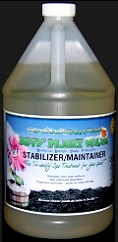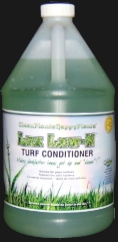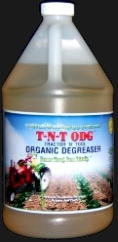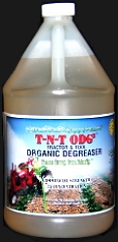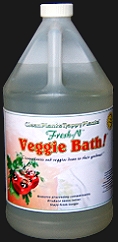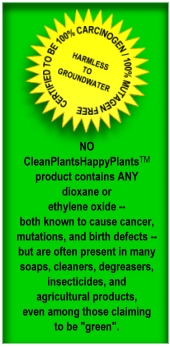| Typical
response is to over-compensate for any perceived deficiencies
by adding heavier applications of unbalanced or poorly
proportioned commercial chemical fertilizers to aid growth.
Whether or not there is an insect or disease attack for being
less than hardy, plants (and
ultimately the consumers) are routinely
exposed to increasing amounts of toxic (usually petroleum
based) pesticides to ward off the bugs or maladies.
Food crops vying for space with weeds get to endure multiple
applications of poisonous herbicides to eliminate the
competition.

At best, such practices are like putting the plant
on steroids. At first glance, the visual results seem
satisfying. But while the plants may look healthy enough,
closer examination and testing reveals them to be less hardy, less
nourishing, and even less tasty than their predecessors.
Worldwide, about 3 billion kg of
pesticides are applied each year at a cost of nearly $40 billion
(Pan-UK, 2003). In the U.S., approximately 500 million kg of
more than 600 different pesticide types are applied annually at a cost of
$10 billion (Pimental
and Greiner, 1997).
“California pesticide
use data show that between 1991 and 2000 almost 2 billion pounds of
active ingredients were applied in California alone.
After a massive increase in pesticide use in the early to mid-1990's, reported use has stabilized
at about 200 million pounds of active ingredients each
year. This
figure only includes farm use and professional pesticide use. Not
included are consumer and much institutional pesticide use.
|
Also
not included in this figure are so-called 'inert' ingredients. U.S.
pesticide use is about 1.2 billion pounds each year, and worldwide
pesticide use is about 5 billion pounds each year.” -- http://www.pesticideinfo.org/Search_Use.jsp
[For detailed information on pesticide use in the U.S.
overall and in the California, New York or Oregon pesticide use
reporting systems, click
here.]
Paradoxically, despite the vast
increase in the amount of pesticides used over the last 30-40 years,
the amount of crop loss
due to pests has
increased from 31% to 37%. There has been a 10-fold
increase in insecticide use in the US
from 1945 to 2000, yet
during this period, total crop losses from insect damage alone have
nearly doubled from 7% to 13% (Pimental).
Besides the obvious dangers to those who have to
work around them, reason would dictate that we are not
helping either the plants or ourselves any time we are using products
with "DANGER", "WARNING", or "CAUTION" on the packaging. around them, reason would dictate that we are not
helping either the plants or ourselves any time we are using products
with "DANGER", "WARNING", or "CAUTION" on the packaging.
And what really defies logic is the doublespeak
from government agencies we think are charged with protecting us who
instead give conflicting reports that our "food may contain toxic or
hazardous chemicals" at the same time telling us that "the food supply
is safe". What it means is that some agent or agency has decided how
much poison we are supposed to ingest and they aren't worried about it.
WE probably should be.

And
this does not begin to address the issues regarding storage or disposal
of toxic pesticides which become obsolete or are finally banned as
being TOO poisonous. Who reaps their "benefits"?
| Somehow,
we are going to have to realize that treating a natural problem with an
unnatural solution may have other than natural beneficial results. |
<--Back
Next-->
|







 If
any portion of the plant’s surface becomes dirty or clogged, the plant
cannot process what it needs as efficiently as it should.
If
any portion of the plant’s surface becomes dirty or clogged, the plant
cannot process what it needs as efficiently as it should. 



